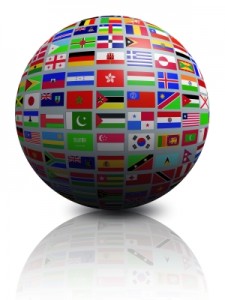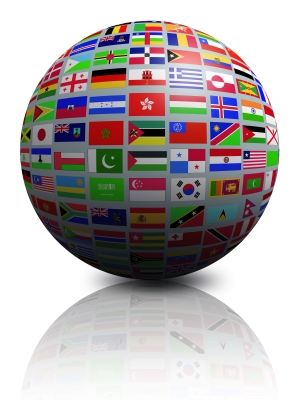 An ADR (American Depositary Receipts) allows US investors to diversify their portfolio with foreign securities. ADRs are bought and sold on American markets just like regular stocks.
An ADR (American Depositary Receipts) allows US investors to diversify their portfolio with foreign securities. ADRs are bought and sold on American markets just like regular stocks.
The stocks of most foreign companies that trade in the U.S. markets are traded as ADRs. U.S. banks issue these stocks. An ADR is not perfectly aligned with the stock that is traded on a foreign exchange. Each ADR represents one or more shares of foreign stock or a fraction of a share of foreign stock. If you own an ADR, you have the right to obtain the foreign stock it represents, but U.S. investors usually find it more convenient to own the ADR. The price of an ADR corresponds to the price of the foreign stock in its home market, adjusted to the ratio of the ADRs to foreign company shares. An ADR is the actual physical certificate whereas an American Depositary Share (ADS) is the actual share. An ADR can represent any number of ADSs. The term “ADR” is often used to mean both the certificates and the securities themselves.
ADRs are quoted and traded in US dollars in the US securities markets. Also, the dividends, if any, are paid to investors in US dollars. This is an excellent way to buy shares in a foreign company while realizing any dividends and capital gains in U.S. dollars. However, ADRs do not eliminate the currency and economic risks for the underlying shares in another country. For example, dividend payments in euros would be converted to U.S. dollars, net of conversion expenses and foreign taxes and in accordance with the deposit agreement.
ADRs are good for individual investors in the US. They were introduced as a result of the complexities involved in buying shares in foreign countries and the difficulties associated with trading at different prices and currency values. For this reason, U.S. banks simply purchase a bulk lot of shares from the company, bundle the shares into groups, and reissues them on an exchange in the US. In return, the foreign company must provide detailed financial information to the sponsor bank.
There are four different types of ADR issues:
- Unsponsored
- Sponsored Level 1
- Sponsored Level 2
- Sponsored Level 3
While there are different types of ADRs, the individual investor really will see little difference in Level 2 and 3. Most of the stocks that you will see discussed on this site (and might make my Watch List) are Level 2 and Level 3 ADR issues.
Unsponsored ADR
Unsponsored shares trade on the over-the-counter (OTC) market. These shares are issued in accordance with market demand, and the foreign company has no formal agreement with a depositary bank. Unsponsored ADRs are often issued by more than one bank. Since these stocks are only OTC, it is rare (but not impossible) that there is enough information on them to make my Watch List.
Level 1
This is the most basic type of ADR where foreign companies either don’t qualify or don’t wish to have their ADR listed on an exchange. Level 1 ADRs are found on the over-the-counter market and are an easy and inexpensive way to gauge interest for its securities in North America. Level 1 ADRs also have the loosest requirements from the Securities and Exchange Commission (SEC). The company is not required to issue quarterly or annual reports in compliance with U.S. GAAP. However, the company must have a security listed on one or more stock exchange in a foreign jurisdiction and must publish in English on its website its annual report in the form required by the laws of the country of incorporation, organization or domicile. As with Unsponsored ADR issues, these stocks probably do not have enough information to make my Watch List.
Level 2
This type of ADR is listed on an exchange or quoted on Nasdaq. Level 2 ADRs have slightly more requirements from the SEC, but they also get higher visibility trading volume. This level is more complicated for a foreign company. The company must file a registration statement with the U.S. SEC and is under SEC regulation. In addition, the company is required to file a form that is the basic equivalent of an annual report for a U.S. company. In their filings, the company is required to follow U.S. GAAP standards. These stocks can be listed on NYSE or NASDAQ and must meet the exchanges listing requirements.
Level 3
Is when an issuer floats a public offering of an ADR on a U.S. exchange and is the highest level a foreign company can sponsor. Level 3 ADRs are able to raise capital and gain substantial visibility in the U.S. financial markets. The company is required to adhere to stricter rules that are similar to those followed by U.S. companies. Foreign companies with Level 3 programs will often issue materials that are more informative and are more accommodating to their U.S. shareholders because they rely on them for capital.
In general, you can consider an ADR to be the same as any other stock that is based in the US. Since you should always have some exposure to foreign markets, it may be wise to try to keep 2-4 ADR issues in your stock portfolio. On this site, I try to identify an ADR in parenthesis when I discuss such an offering. You should also consider an international index fund in your portfolio, it should be one of the four funds in your portfolio.
Image courtesy of Salvatore Vuono / FreeDigitalPhotos.net
